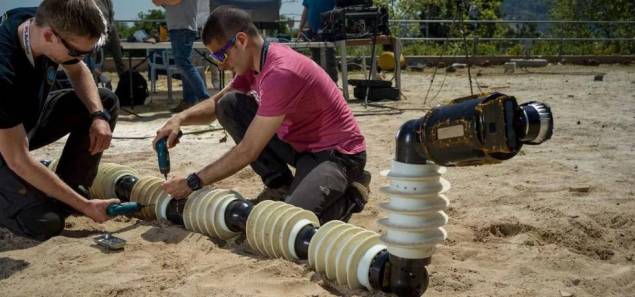The snake robot shape has been around for a long time. Besides adding variety to the field of robotics, the design also has a number of useful features. The first is redundancy, which makes sure that the system keeps running even if a part gets broken. The second part is a body that helps the serpentine system get through small areas.
Because of this, snake robots are a great addition to search and rescue teams because they can get into places that people and other robots can’t. It can also be used in plumbing and even medicine, with smaller forms that can fit around pipes and human organs, respectively. NASA’s Jet Propulsion Laboratory (JPL) has been looking into how the robust form factor could be used to look for life beyond Earth. The JPL has never been afraid of future robotic uses.
We’re still in the very early stages of this kind of story, as is often the case. At the moment, tests are being done on areas on Earth that are meant to look like what these systems might find when they break free from the harsh bonds of this pale blue marble. It will take a lot of ice because NASA wants to send it to Enceladus, Saturn’s small, cold moon.
Cassini flybys in the 21st century have shown that the ice-covered moon has a lot of water, which makes it a possible place for life in our solar system. The snake robot called Exobiology Extant Life Surveyor (EELS) will be used to look into the oceans below the moon’s surface and find the answer to one of the big questions in the universe.
It is made to be able to move through ocean-inspired terrain, fluidised media, enclosed labyrinthian environments, and liquids, the study team writes in an article that came out this month in Science Robotics. “Enceladus is the main inspiration for the design of EELS’s hardware and software architecture, as well as its ability to move around and run itself.” As a step towards Enceladus, we have been using glaciers as Earth-like ice settings to build and test its structure.
JPL is working on the project with Arizona State University, the University of California, San Diego, and Carnegie Mellon University. Carnegie Mellon has a long history of making snake robots. In fact, the modules used in this early version of the system were built by HEBI Robotics, a company that grew out of CMU.
CMU says that on Enceladus, EELS could swim through the huge ocean that was about six miles deep at the south pole and slide down narrow geysers on the surface. “EELS is equipped with risk-aware planning, situational awareness, motion planning, and proprioceptive control so it can move away from Earth and human control on its own.”
Also Read: Nasa Wants Four People to Live in a Mars Model
NASA says that the system is 4.4 metres long and weighs 100,000 grammes.
What do you say about this story? Visit Parhlo World For more.


